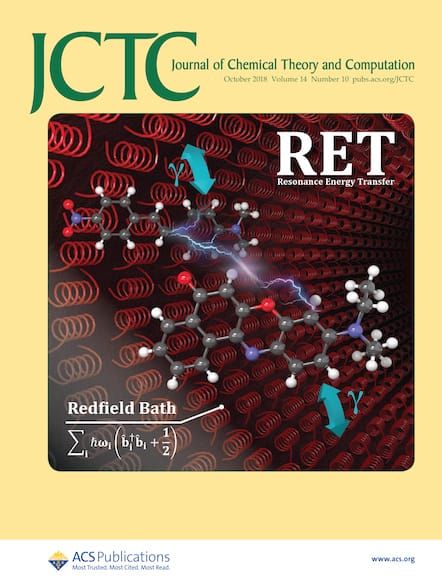Finite-Temperature Double Proton Transfer in Formic Acid Dimer via Constrained Nuclear-Electronic Orbital Molecular Dynamics: Lower Barriers and Enhanced Rates from Nuclear Quantum Delocalization.
IF 5.5
1区 化学
Q2 CHEMISTRY, PHYSICAL
引用次数: 0
Abstract
Proton transfer plays a crucial role in various chemical and biological processes, yet accurately and efficiently describing such reactions remains challenging due to nuclear quantum effects (NQEs). In this work, we employ constrained nuclear-electronic orbital molecular dynamics (CNEO-MD), a method that inherently incorporates NQEs into classical dynamics to investigate double proton transfer in the formic acid dimer (FAD). Leveraging machine learning techniques, we efficiently construct free energy landscapes with NQEs at finite temperatures and obtain transition state theory (TST) rates. Transmission coefficients are further evaluated using flux-side correlation functions to obtain corrected rates that account for recrossing effects. CNEO-MD predicts significantly lowered free energy barriers and enhanced rates compared to conventional DFT-based ab initio molecular dynamics (AIMD), agreeing qualitatively with previous path-integral simulations. Additionally, we explore solvent effects using CNEO-MD with a dielectric continuum solvent model and find the change of the solvent model makes negligible effects. Our findings demonstrate the effectiveness of CNEO-MD in describing proton transfer reactions at finite temperatures and highlight its potential for applications in more complex systems.甲酸二聚体中受约束的核-电子轨道分子动力学的有限温度双质子转移:核量子离域的低障碍和提高速率。
质子转移在各种化学和生物过程中起着至关重要的作用,但由于核量子效应(NQEs),准确有效地描述这些反应仍然具有挑战性。在这项工作中,我们采用约束核电子轨道分子动力学(CNEO-MD),一种固有地将NQEs纳入经典动力学的方法来研究甲酸二聚体(FAD)中的双质子转移。利用机器学习技术,我们有效地构建了有限温度下NQEs的自由能景观,并获得了过渡态理论(TST)速率。利用通量侧相关函数进一步评估透射系数,以获得考虑重交效应的校正率。与传统的基于dft的从头算分子动力学(AIMD)相比,CNEO-MD预测自由能垒显著降低,速率显著提高,与之前的路径积分模拟在质量上一致。此外,我们利用CNEO-MD与介质连续介质溶剂模型探讨了溶剂效应,发现溶剂模型的变化可以忽略影响。我们的发现证明了CNEO-MD在描述有限温度下质子转移反应方面的有效性,并突出了其在更复杂系统中的应用潜力。
本文章由计算机程序翻译,如有差异,请以英文原文为准。
求助全文
约1分钟内获得全文
求助全文
来源期刊

Journal of Chemical Theory and Computation
化学-物理:原子、分子和化学物理
CiteScore
9.90
自引率
16.40%
发文量
568
审稿时长
1 months
期刊介绍:
The Journal of Chemical Theory and Computation invites new and original contributions with the understanding that, if accepted, they will not be published elsewhere. Papers reporting new theories, methodology, and/or important applications in quantum electronic structure, molecular dynamics, and statistical mechanics are appropriate for submission to this Journal. Specific topics include advances in or applications of ab initio quantum mechanics, density functional theory, design and properties of new materials, surface science, Monte Carlo simulations, solvation models, QM/MM calculations, biomolecular structure prediction, and molecular dynamics in the broadest sense including gas-phase dynamics, ab initio dynamics, biomolecular dynamics, and protein folding. The Journal does not consider papers that are straightforward applications of known methods including DFT and molecular dynamics. The Journal favors submissions that include advances in theory or methodology with applications to compelling problems.
 求助内容:
求助内容: 应助结果提醒方式:
应助结果提醒方式:


